The structure of a calsequestrin filament reveals mechanisms of familial arrhythmia
- PMID: 33046906
- PMCID: PMC7718342
- DOI: 10.1038/s41594-020-0510-9
The structure of a calsequestrin filament reveals mechanisms of familial arrhythmia
Abstract
Mutations in the calcium-binding protein calsequestrin cause the highly lethal familial arrhythmia catecholaminergic polymorphic ventricular tachycardia (CPVT). In vivo, calsequestrin multimerizes into filaments, but there is not yet an atomic-resolution structure of a calsequestrin filament. We report a crystal structure of a human cardiac calsequestrin filament with supporting mutational analysis and in vitro filamentation assays. We identify and characterize a new disease-associated calsequestrin mutation, S173I, that is located at the filament-forming interface, and further show that a previously reported dominant disease mutation, K180R, maps to the same surface. Both mutations disrupt filamentation, suggesting that disease pathology is due to defects in multimer formation. An ytterbium-derivatized structure pinpoints multiple credible calcium sites at filament-forming interfaces, explaining the atomic basis of calsequestrin filamentation in the presence of calcium. Our study thus provides a unifying molecular mechanism through which dominant-acting calsequestrin mutations provoke lethal arrhythmias.
Conflict of interest statement
Declaration of Interests
The authors declare no competing interests.
Figures

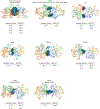


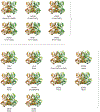
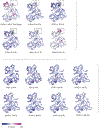
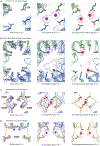


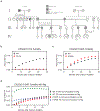


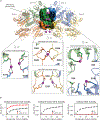


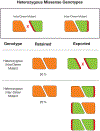
Similar articles
-
A novel heterozygous mutation in cardiac calsequestrin causes autosomal dominant catecholaminergic polymorphic ventricular tachycardia.Heart Rhythm. 2016 Aug;13(8):1652-60. doi: 10.1016/j.hrthm.2016.05.004. Epub 2016 May 5. Heart Rhythm. 2016. PMID: 27157848 Free PMC article.
-
Probing cationic selectivity of cardiac calsequestrin and its CPVT mutants.Biochem J. 2011 Apr 15;435(2):391-9. doi: 10.1042/BJ20101771. Biochem J. 2011. PMID: 21265816
-
Glycosylation of skeletal calsequestrin: implications for its function.J Biol Chem. 2012 Jan 27;287(5):3042-50. doi: 10.1074/jbc.M111.326363. Epub 2011 Dec 14. J Biol Chem. 2012. PMID: 22170046 Free PMC article.
-
Catecholaminergic polymorphic ventricular tachycardia from bedside to bench and beyond.Curr Probl Cardiol. 2009 Jan;34(1):9-43. doi: 10.1016/j.cpcardiol.2008.09.002. Curr Probl Cardiol. 2009. PMID: 19068246 Review.
-
Catecholaminergic polymorphic ventricular tachycardia: recent mechanistic insights.Cardiovasc Res. 2005 Aug 15;67(3):379-87. doi: 10.1016/j.cardiores.2005.04.027. Cardiovasc Res. 2005. PMID: 15913575 Review.
Cited by
-
The function and regulation of calsequestrin-2: implications in calcium-mediated arrhythmias.Biophys Rev. 2022 Jan 7;14(1):329-352. doi: 10.1007/s12551-021-00914-6. eCollection 2022 Feb. Biophys Rev. 2022. PMID: 35340602 Free PMC article. Review.
-
Molecular and tissue mechanisms of catecholaminergic polymorphic ventricular tachycardia.J Physiol. 2020 Jul;598(14):2817-2834. doi: 10.1113/JP276757. Epub 2020 Apr 27. J Physiol. 2020. PMID: 32115705 Free PMC article. Review.
-
Impaired Dynamic Sarcoplasmic Reticulum Ca Buffering in Autosomal Dominant CPVT2.Circ Res. 2022 Sep 30;131(8):673-686. doi: 10.1161/CIRCRESAHA.121.320661. Epub 2022 Sep 14. Circ Res. 2022. PMID: 36102198 Free PMC article.
-
Pacing Dynamics Determines the Arrhythmogenic Mechanism of the CPVT2-Causing CASQ2G112+5X Mutation in a Guinea Pig Ventricular Myocyte Computational Model.Genes (Basel). 2022 Dec 22;14(1):23. doi: 10.3390/genes14010023. Genes (Basel). 2022. PMID: 36672764 Free PMC article.
-
Exonic splicing code and protein binding sites for calcium.Nucleic Acids Res. 2022 Jun 10;50(10):5493-5512. doi: 10.1093/nar/gkac270. Nucleic Acids Res. 2022. PMID: 35474482 Free PMC article.
References
-
- Bers DM Macromolecular complexes regulating cardiac ryanodine receptor function. J. Mol. Cell. Cardiol 37, 417–429 (2004). - PubMed
-
- Guerrero-Hernández A et al. in Calcium Signaling (ed Islam MS) 337–370 (Springer International Publishing, 2020).
-
- MacLennan DH Isolation of a second form of calsequestrin. J. Biol. Chem 249, 980–984 (1974). - PubMed
Methods References
-
- Winter G xia2: an expert system for macromolecular crystallography data reduction. J. Appl. Crystallogr 43, 186–190 (2010).
-
- Evans P Scaling and assessment of data quality. Acta Crystallogr. D Biol. Crystallogr 62, 72–82 (2006). - PubMed

